Cloud environment operations
Categories:
Prior reading: Cloud environments overview
Purpose: This document provides detailed instructions for performing operations on cloud environments through the Verily Workbench web UI.
Notes: These instructions all assume that you have already opened a workspace in the Workbench web UI and navigated to the Environments tab. This document does not cover doing work within a cloud environment, nor installing additional libraries/software.
List your cloud environments and check their status
Your environments are listed in the Environments tab of the workspace.
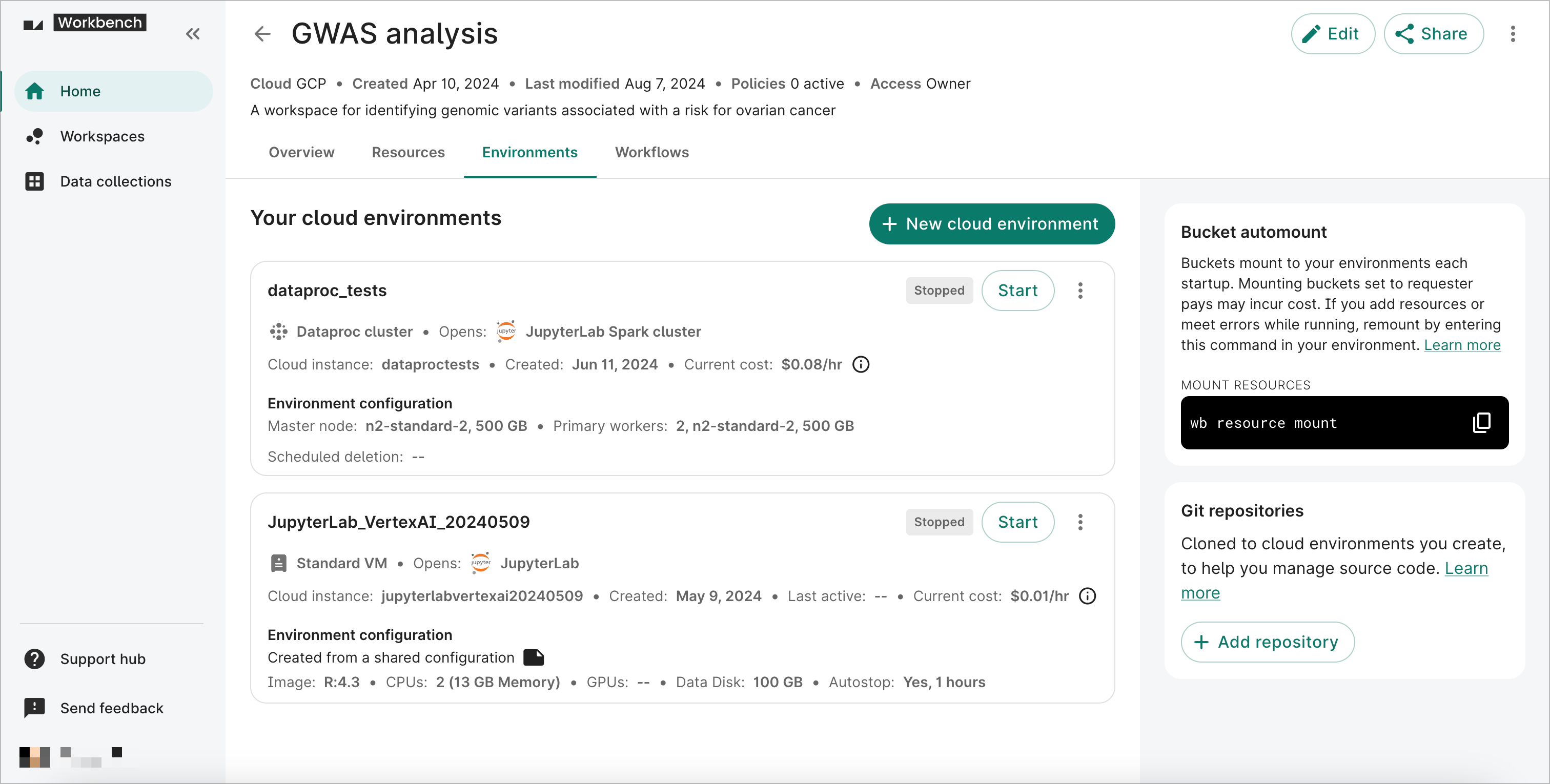
A badge in the top right corner of each environment’s card denotes its status, which can be one of the following:
- Creating
- Provisioning
- Startup script
- Starting
- Running
- Stopping
- Stopped
For more information about the operations you can perform on environments that are either Stopped or Running, see Operations on existing cloud environments. Environments that are in the process of Starting or Stopping cannot be operated on.
If you have an environment that seems stuck on either Starting or Stopping, please contact the support team for help.
Create a new cloud environment (JupyterLab Vertex AI Workbench instance)
In the Environments tab of your workspace:
-
Click New cloud environment to open the Creating cloud environment dialog.
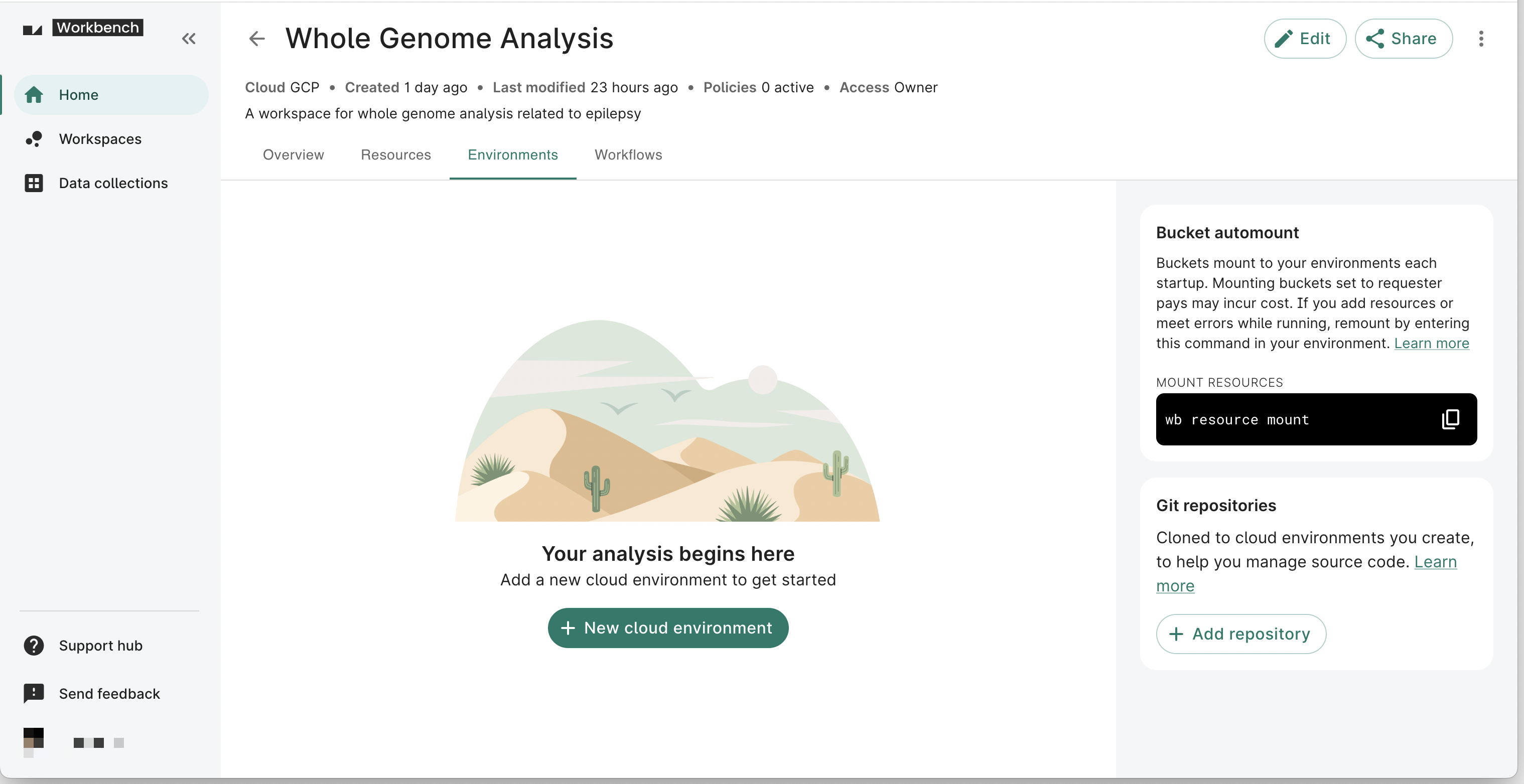
-
Either select a cloud environment app from the list, or select the custom Compute Engine instance option. In the image below, the JupyterLab Vertex AI Workbench instance is selected. Click the Next button.
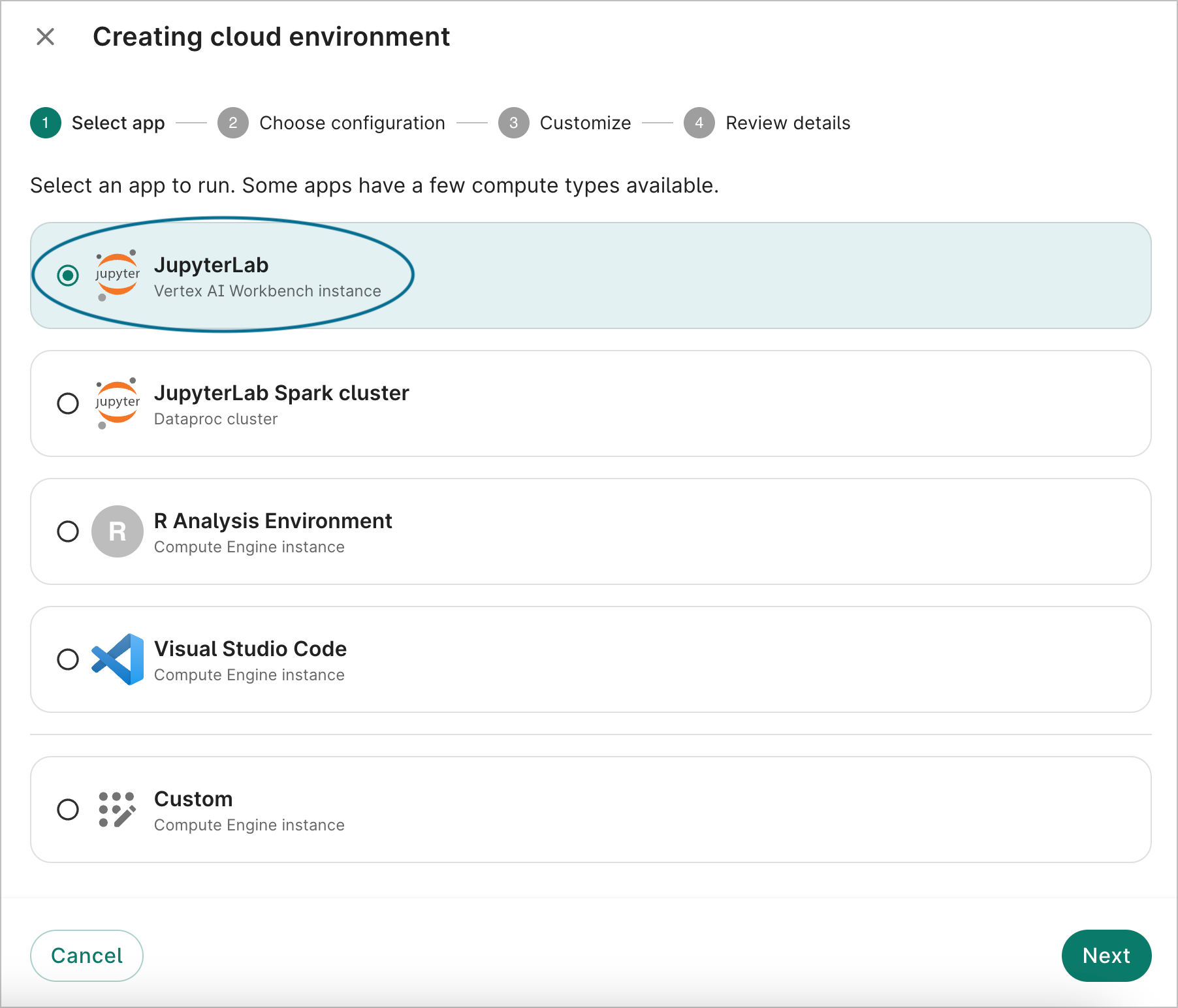
-
A default configuration will already be selected for you. Click the Next button.
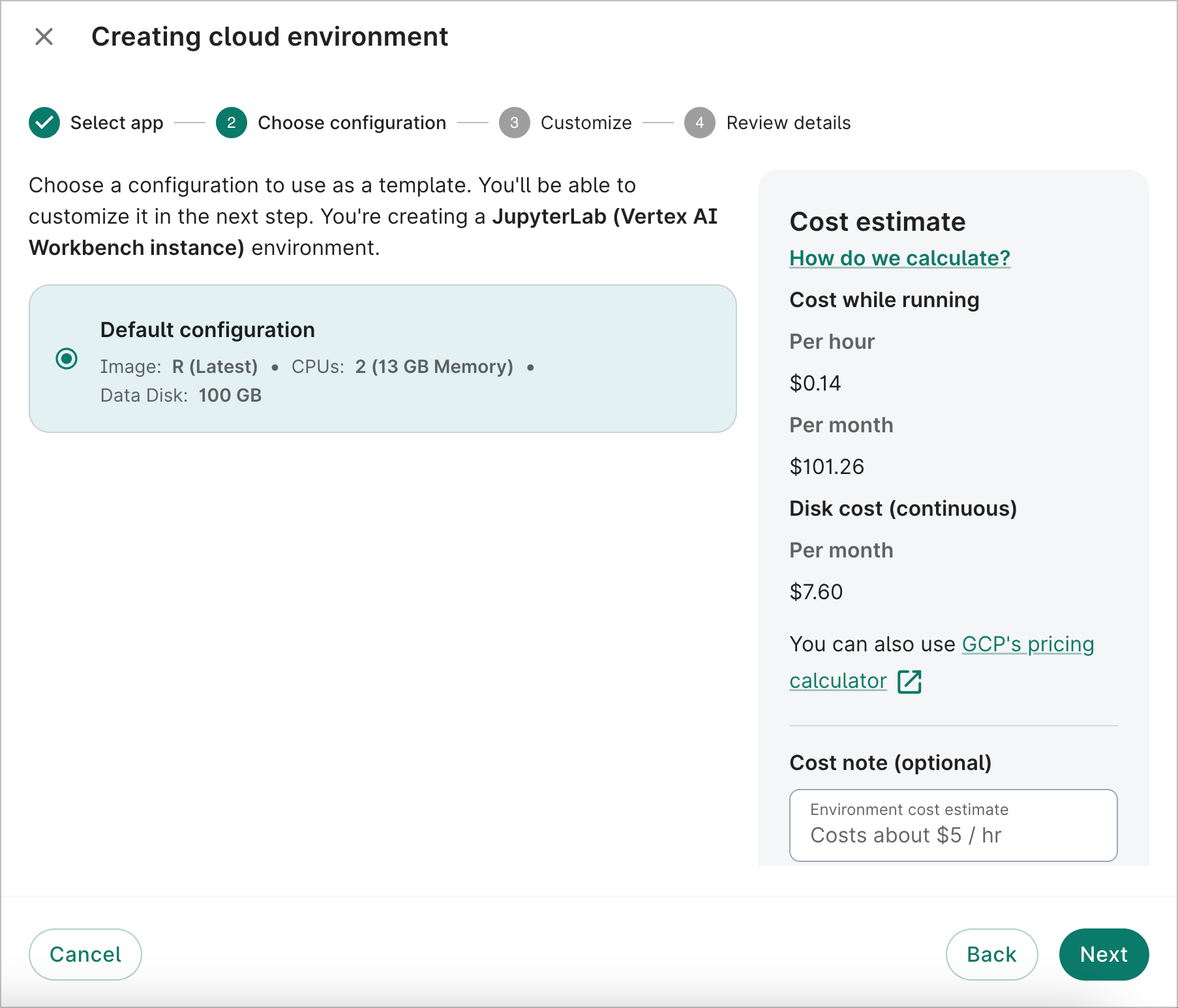
-
Select an environment image, or enter a custom container. In the image below, the TensorFlow Enterprise image is selected.
You can also change the number of CPUs, which in turn changes the total memory available. If you selected a PyTorch or TensorFlow Enterprise image, you can also attach GPUs to the VM.
In addition, you can change the data disk size for your cloud environment. The default recommended size is 100 GB for Vertex AI Workbench instances and 500 GB for Compute Engine instances. However, it can range from 10 GB to 64,000 GB (64 TB). Please note that the data disk size can’t currently be customized via the UI for Dataproc clusters.
Tip
It’s possible to create notebooks from other Deep Learning VM environments as well, via the Workbench CLI. See Choose an image for more information on specifying image versions. You can run a command like the following (substituting your notebook name, and specifying machine type, accelerators, etc. as desired):
wb resource create gcp-notebook \
--id <your-notebook-name> \
--machine-type=<MACHINE_TYPE> \
--location=us-central1-a \
--vm-image-family=<IMAGE_FAMILY> \
--vm-image-project=deeplearning-platform-release
Finally, you can choose to have a running cloud environment automatically stop after a specified idle time. The autostop idle time is set to 4 hours by default, but it can range from 1 hour to 14 days. You can also choose to opt out of the autostop feature.
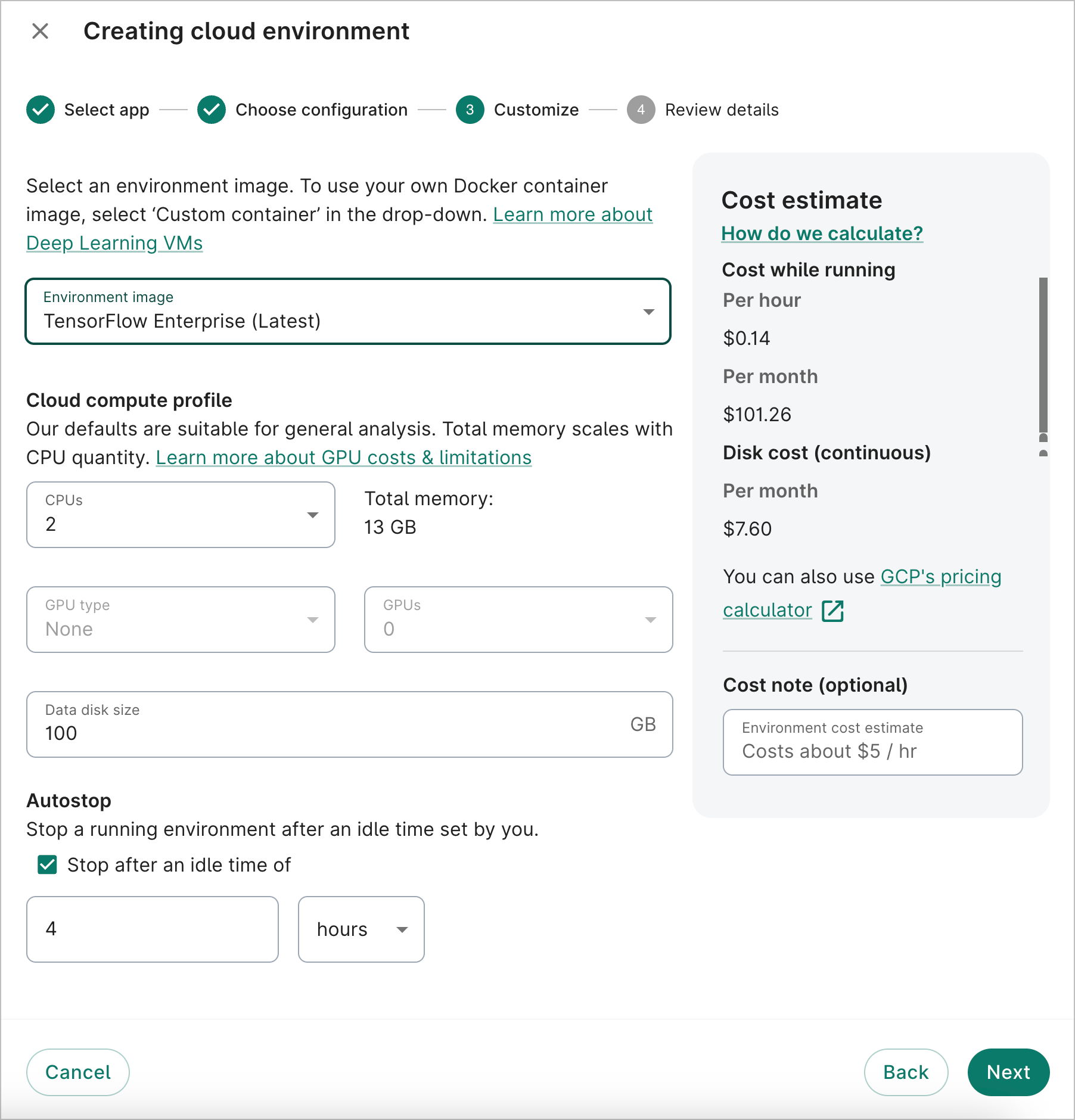
To learn more about configuring the compute profile of your environment, see Compute profile configuration options.
Once you’ve finished customizing configurations, click the Next button.
Be aware
Use of GPUs is subject to certain constraints and has important implications for cost. Please familiarize yourself with them by reading the documentation on Compute profile configuration options before using GPUs in your work.-
Enter an environment ID, name, and optional description. Click the Create environment button.
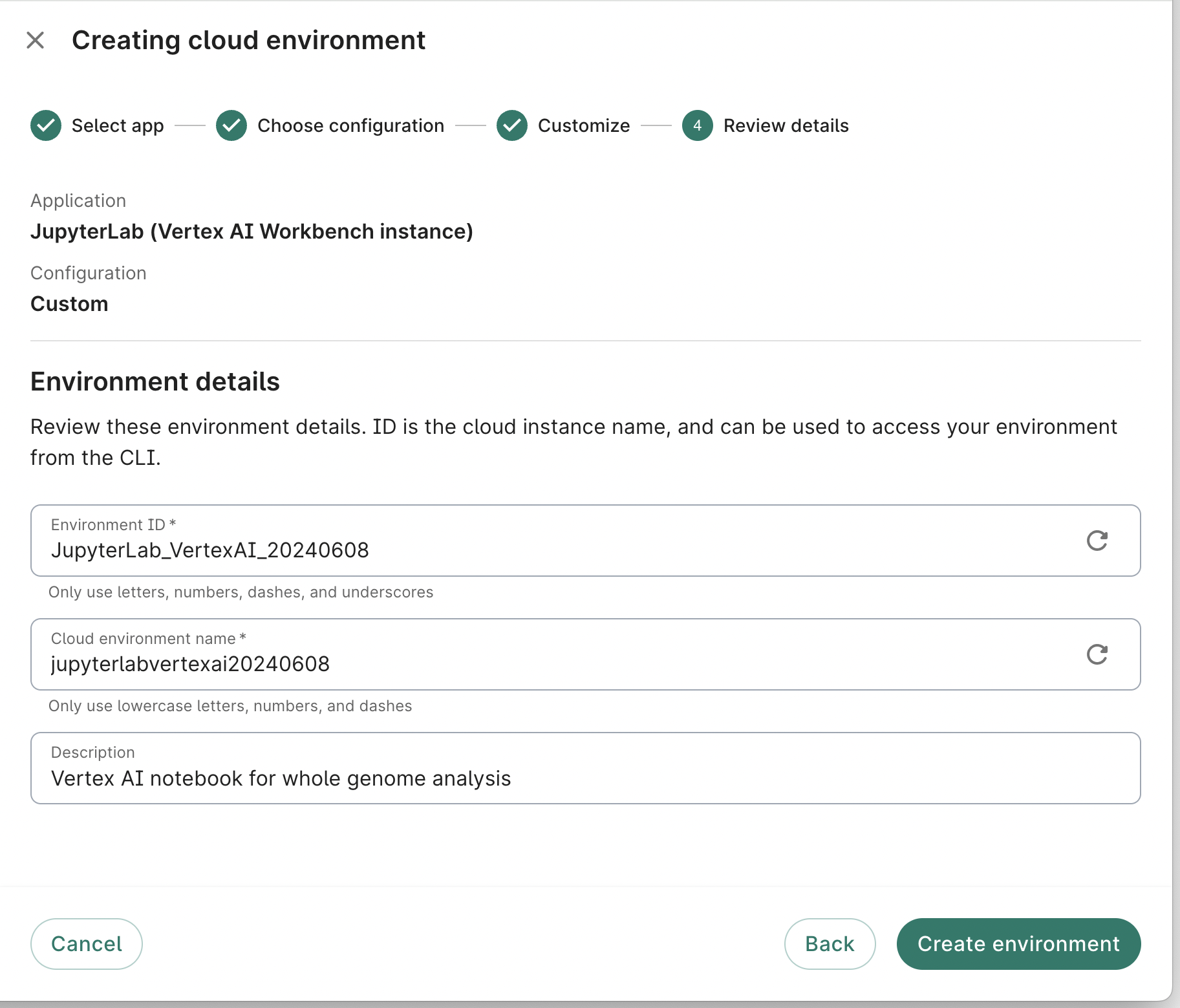
Other cloud environment app options
Cloud environments can be created with other apps besides JupyterLab Vertex AI Workbench:
- JupyterLab Spark cluster (Dataproc cluster)
- R Analysis Environment
- Visual Studio Code
- Custom
See Cloud environment app options for more details.
Operations on existing cloud environments
Edit environment ID and description
You can edit the ID, description, and autostop idle time of your cloud environment at any time. To do so, select Edit in the action menu of the environment card. This will bring up the editing dialog. Edit the fields as needed, then click on the Update button to save your changes.
Note
You can also add autostop via the editing dialog to a cloud environment that doesn’t already have autostop enabled.Be aware
You cannot edit the name of your cloud environment.
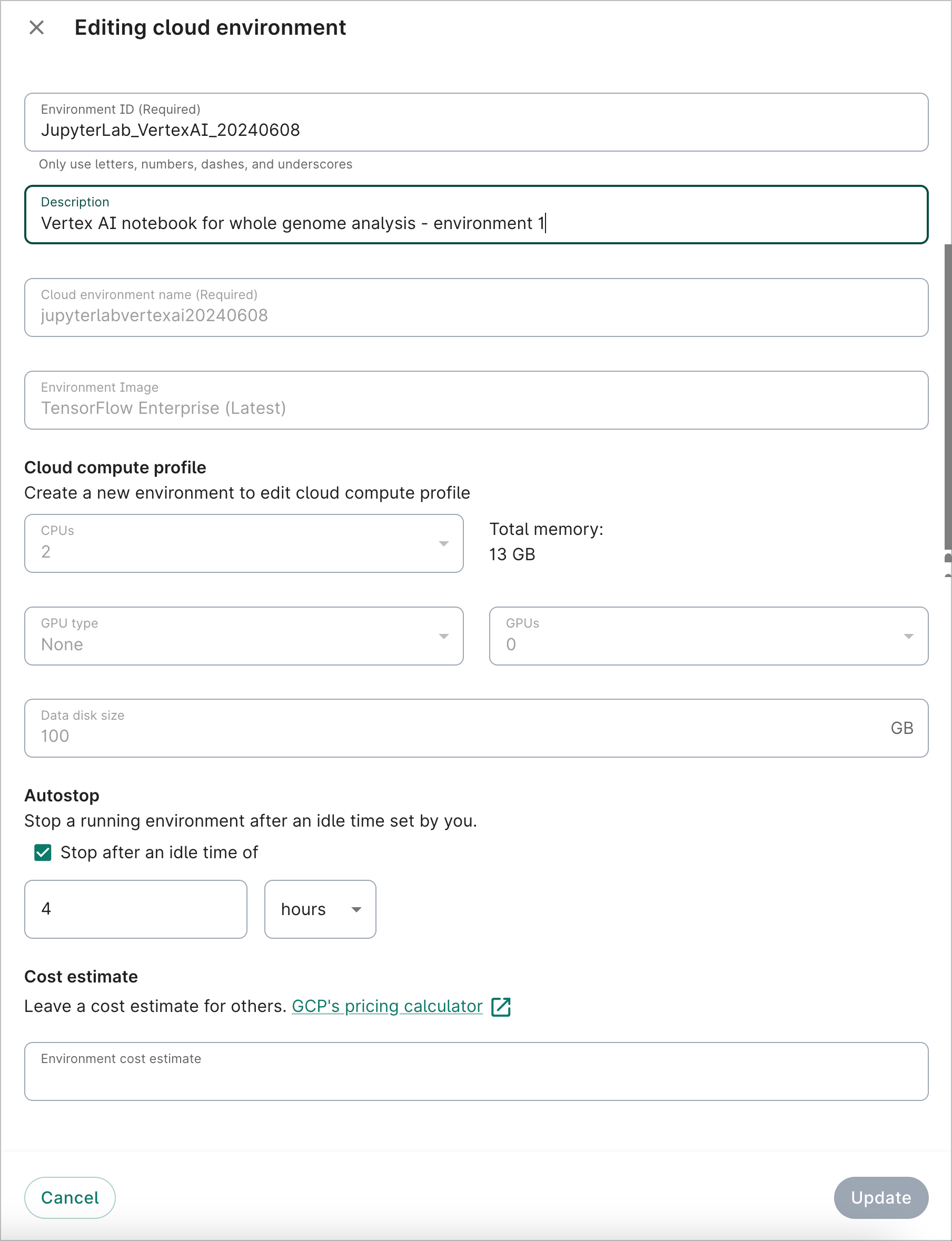

Start cloud environment
To start a cloud environment that is currently stopped, click the Start button. This will immediately send the instruction to start the environment; there is no confirmation step. However, there may be a lag of a few seconds before the status is updated in the graphical user interface.
Starting the environment should take less than a minute. During that time, you cannot stop the environment; you can only edit its name and description, duplicate it, or delete it.



Stop cloud environment
To stop a cloud environment that is currently running, click the Stop button. This will immediately send the instruction to stop the environment; there is no confirmation step. However, there may be a lag of a few seconds before the status is updated in the graphical user interface.

Stopping the environment should take less than a minute. During that time, you cannot restart the environment; you can only edit its name and description, duplicate it, or delete it.
If your cloud environment has autostop enabled, you’ll see the autostop idle time listed in the environment’s card. You can still manually stop the environment any time before it’s set to automatically stop.
Delete cloud environment
You can delete a cloud environment by selecting Delete in the action menu of the environment card.

This will bring up a deletion dialog that details what will be deleted and asks you to confirm the deletion request.
To proceed with deletion, check the box confirming your intent to delete the environment and its associated resources, then click the Delete environment button.
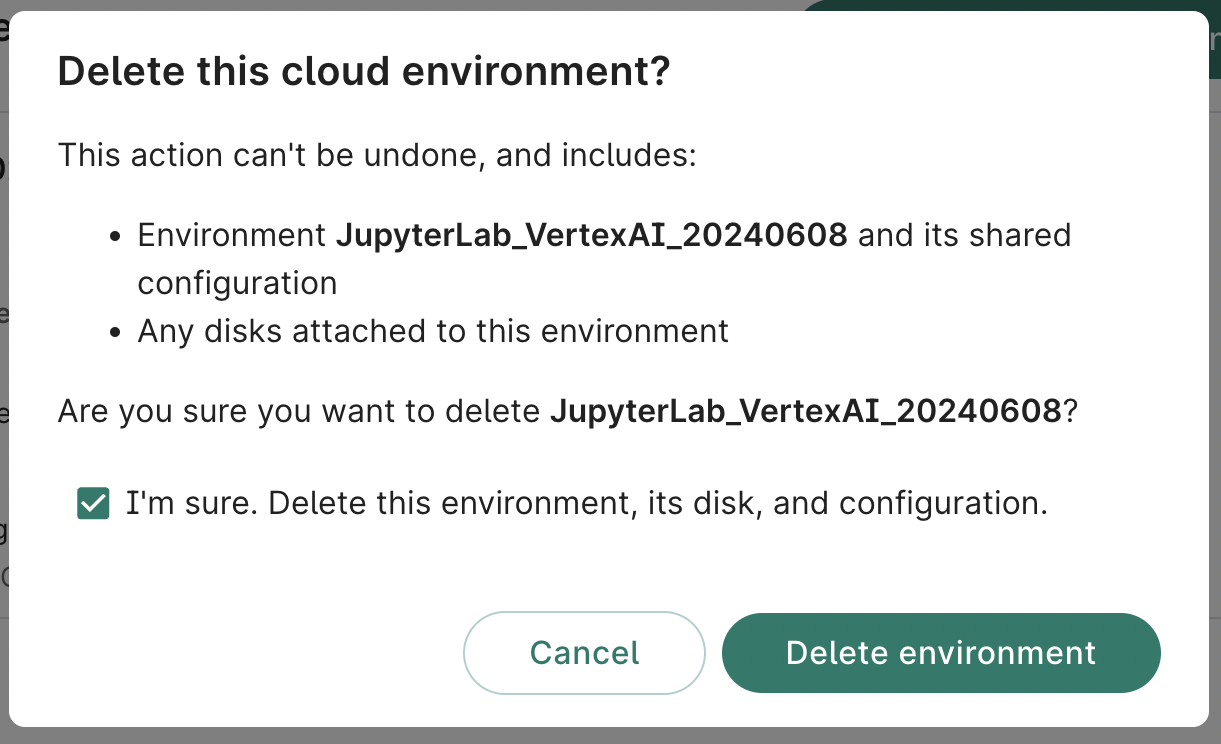
Modify compute profile
You cannot change the environment image and cloud compute profile of an existing cloud environment through the web UI. To generate a different configuration exclusively through the web UI, you must create a new cloud environment with the desired configuration. You can create as many cloud environments as you want within the same workspace.
However, it’s possible to modify an existing environment’s compute profile through the Google Cloud console or via the Workbench CLI, using the wb resource update gcp-notebook command. To do this, the environment needs to be STOPPED first, as described in Stop cloud environment.
Note that you can stop and start your environments from the Google Cloud console UI itself.
To modify the compute profile of an existing cloud environment through the Google Cloud console:
-
From the right-hand Workspace details panel of the workspace’s Overview page, click on the link for your workspace’s associated Google Project. This will take you to the Google Cloud console with the correct project set.
-
From the menu in the upper left of the Console, navigate to the
Vertex AIapp page and click onWorkbenchin the left-hand menu (underNOTEBOOKS). If you have a hard time findingVertex AIin the list of Google Cloud apps, you can use the search bar at the top of the console page to search for it.Your environments should be listed under the tab labeled
USER-MANAGED NOTEBOOKS(not underINSTANCES). -
Make sure that the environment you want to reconfigure is stopped before you try to modify it. Then click on the link for the environment to view its details, and click on the
HARDWAREtab: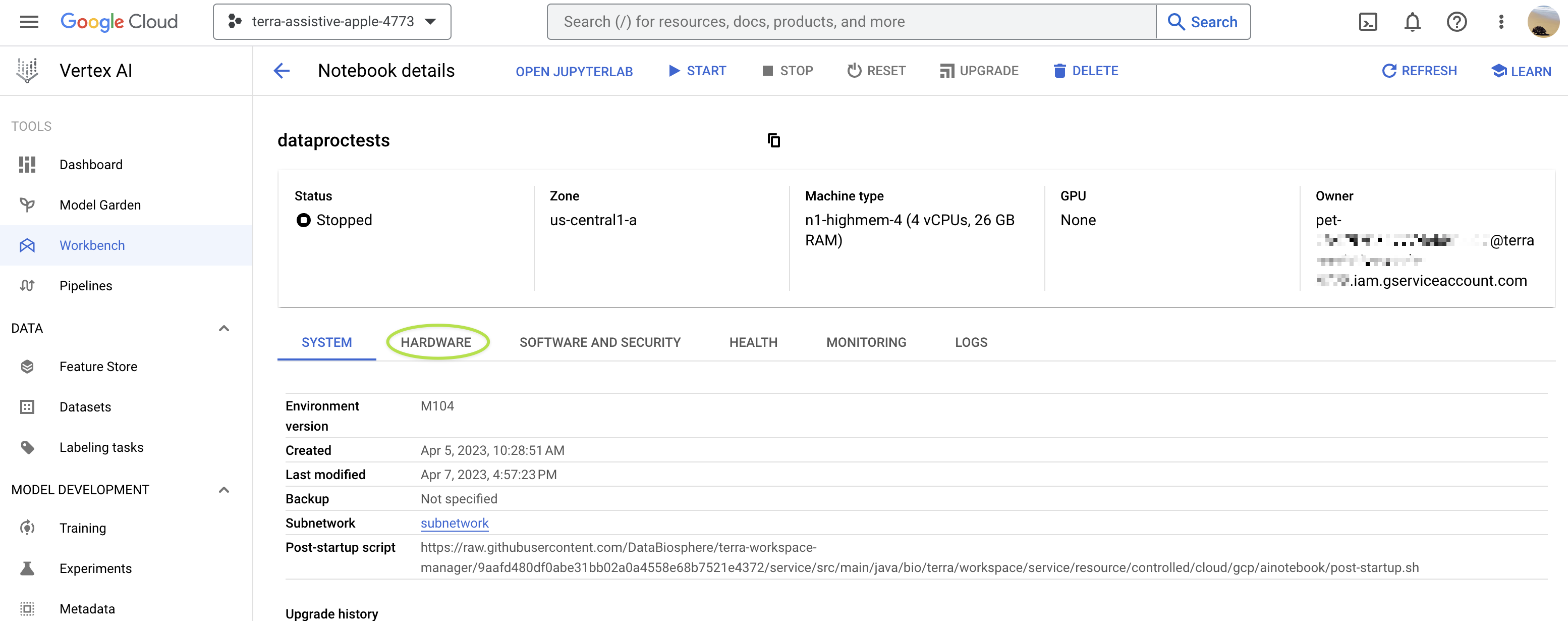
-
Then, update the
machine typeand (optionally)GPUconfiguration settings to the desired values and click “SUBMIT.” This screencast walks through the process:
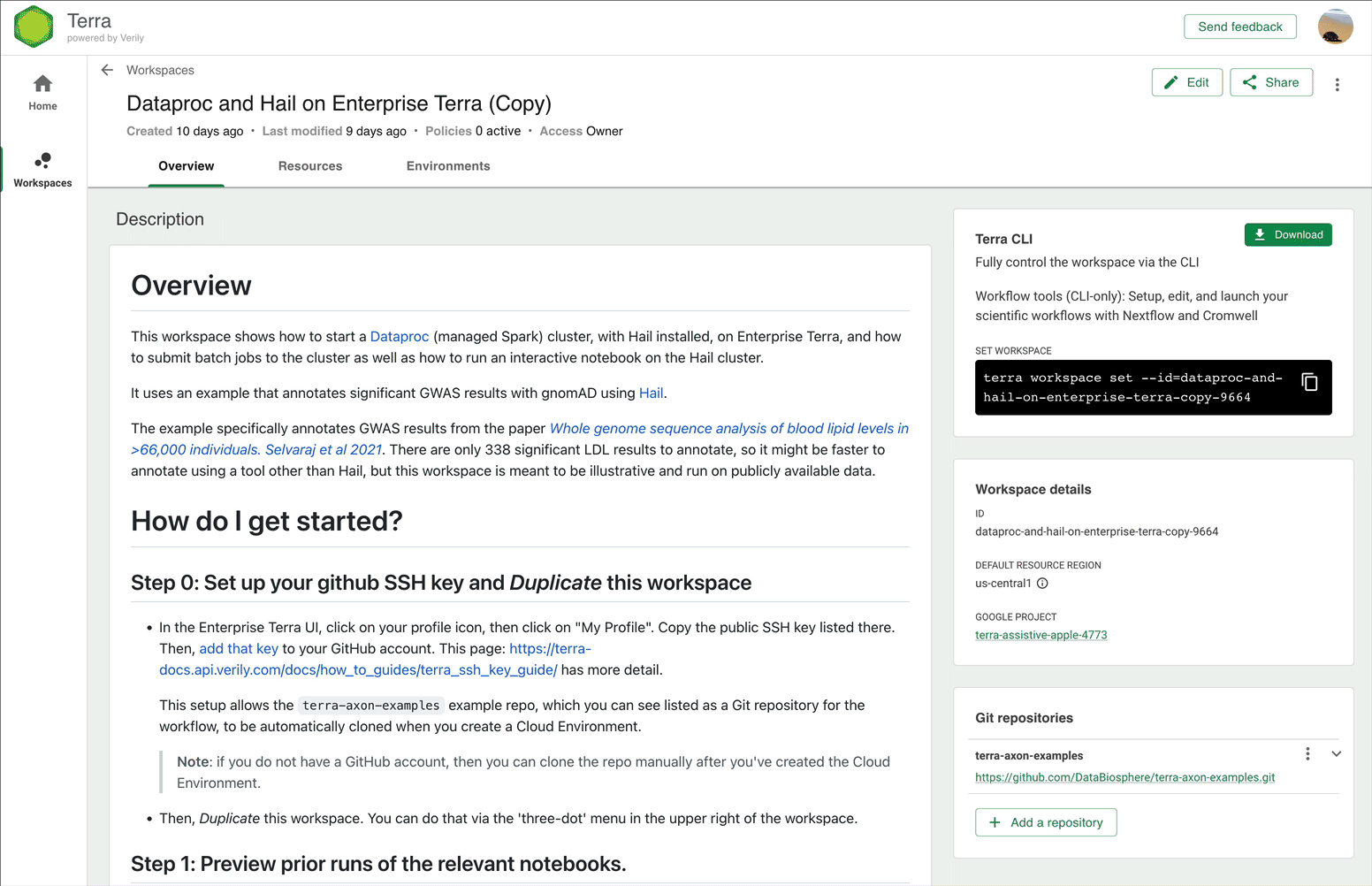
To learn more about the available options, see Compute profile configuration options.
Get cost estimates for different environment VM configurations
As you can see in the screencast above, the cloud environment cost estimates change as
you reconfigure the machine type and GPU settings. You can use this Cloud console view of your
cloud environment to see an estimate of how much your environment would cost you if you left it RUNNING
for a month.
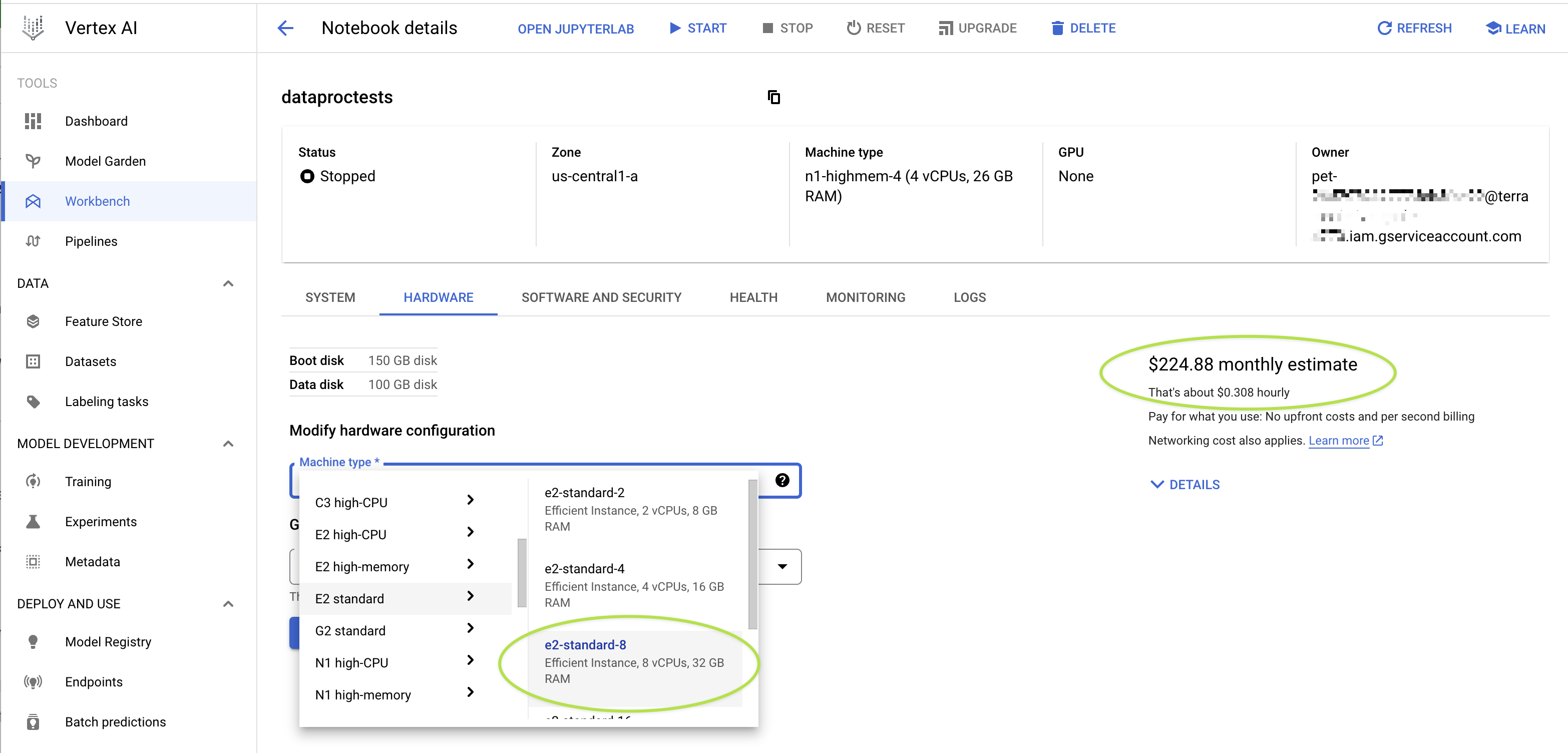
Note that the estimated charges are specifically for a running cloud environment; if you stop a cloud environment, you are still charged for your cloud environment’s disk, but you are not incurring compute costs. As discussed above, it’s therefore recommended to stop your cloud environment when it’s not in use.
Note on button locations
On the Environments page, the buttons for operations that apply to existing environments are located in the additional actions menu, which is represented by a “three-dot” icon in the top right corner of each environments card.

Last Modified: 23 September 2024